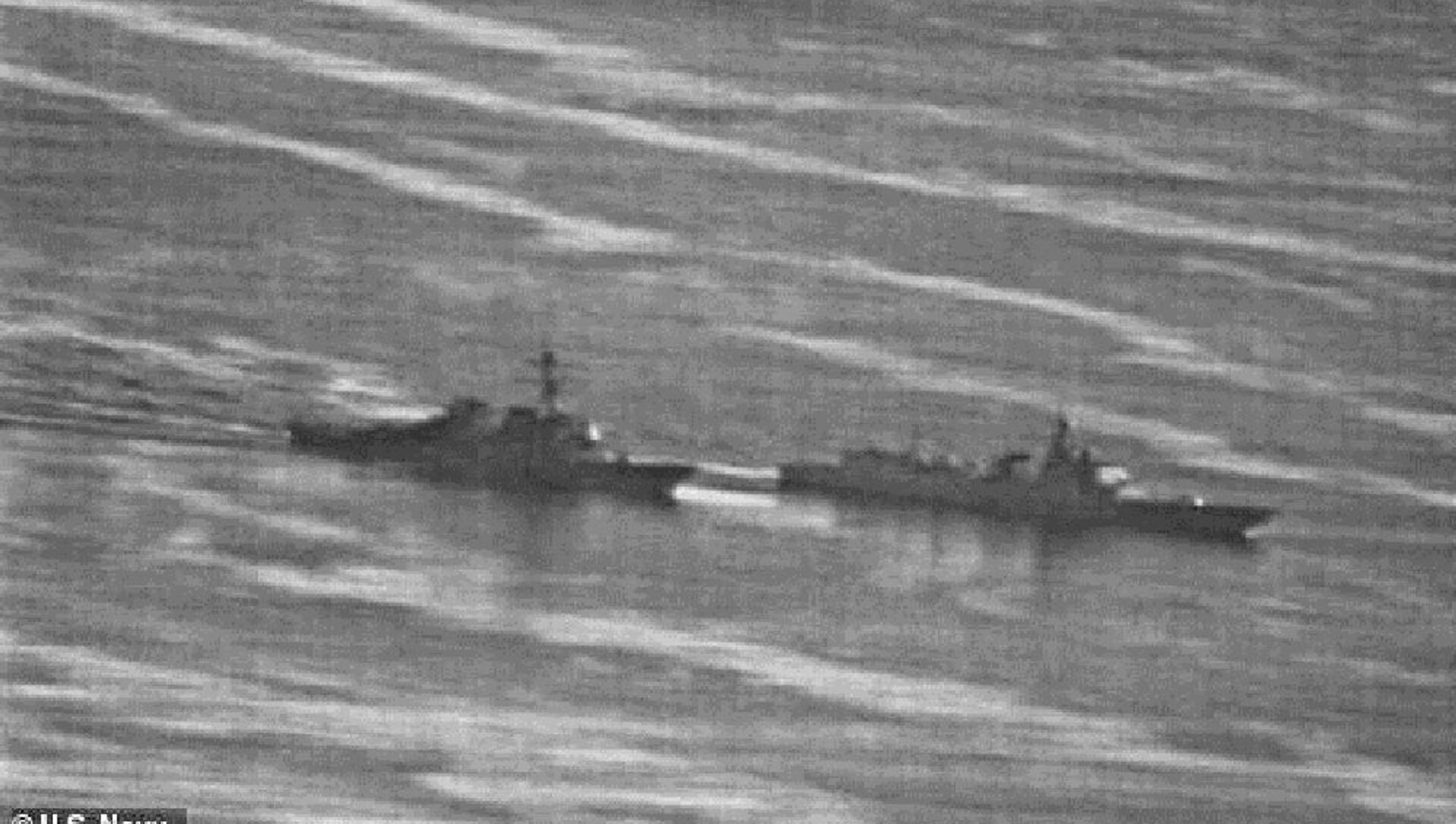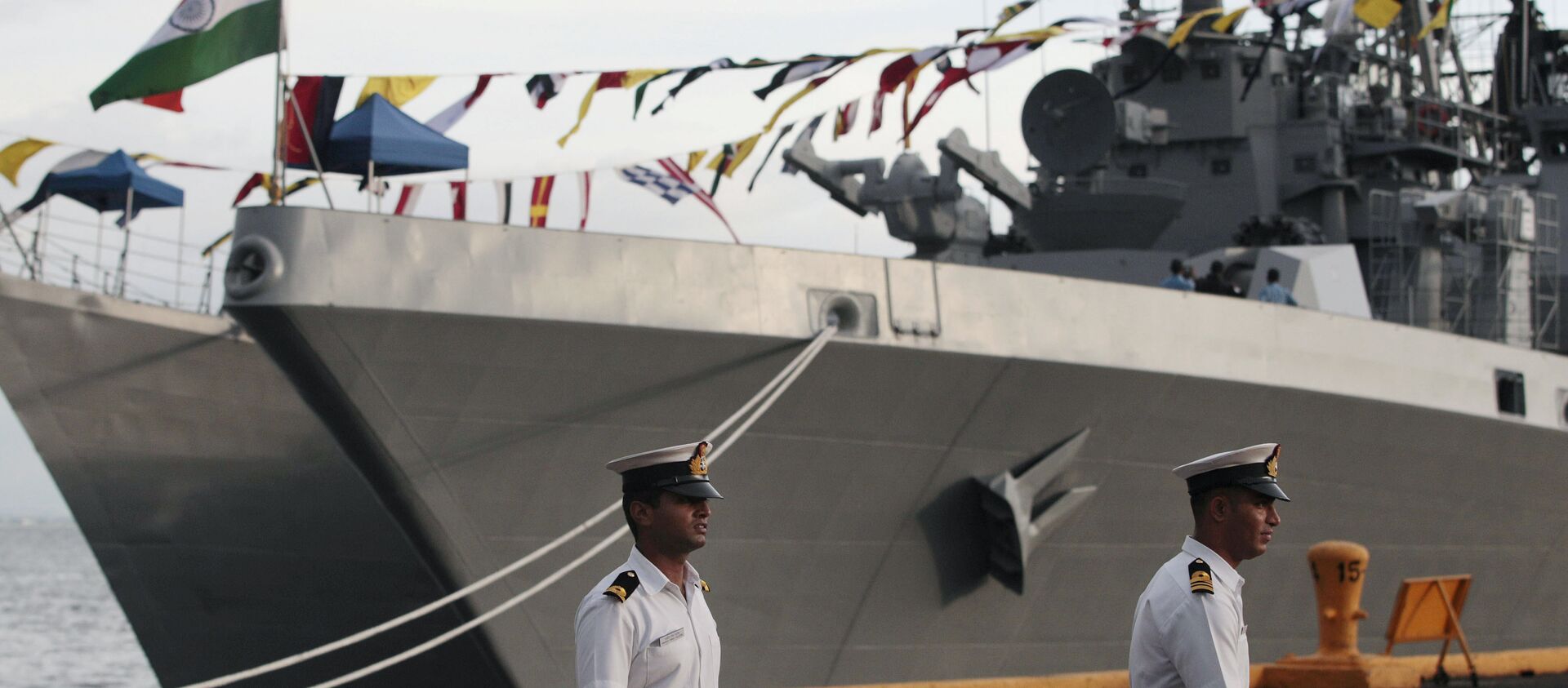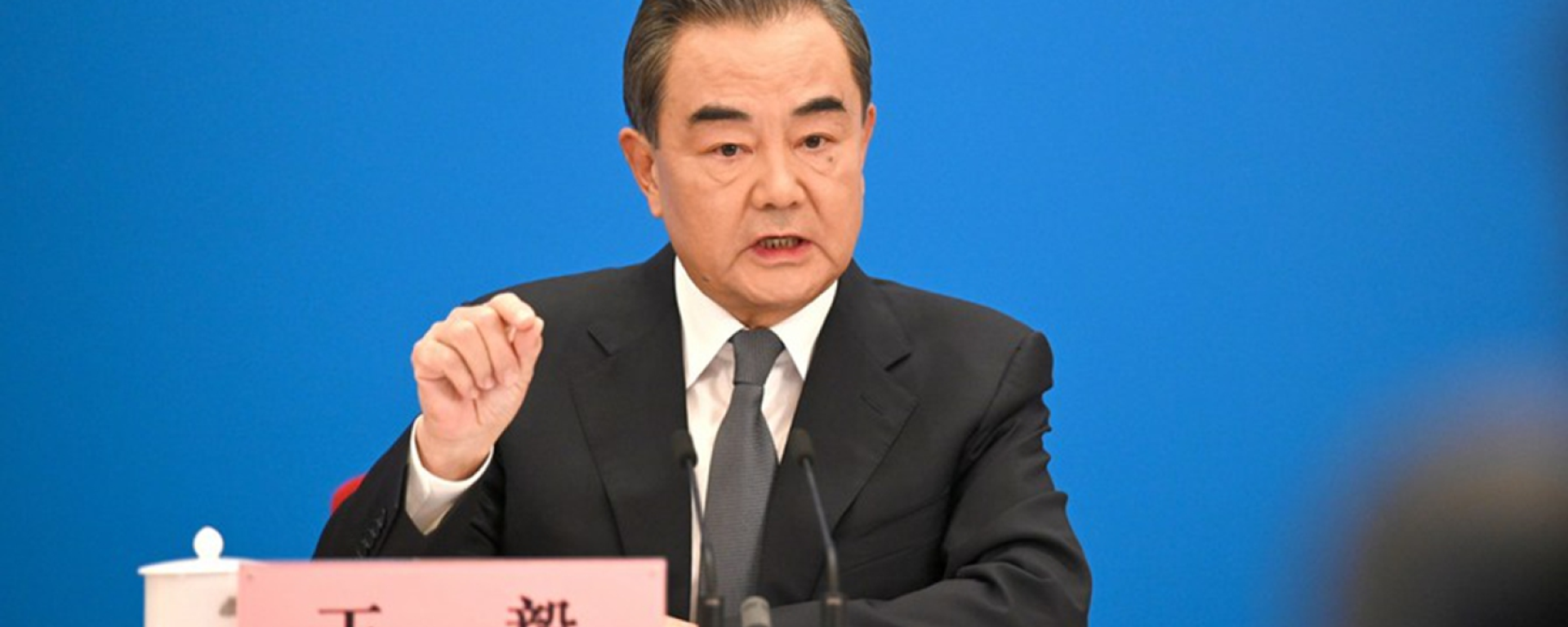https://sputnikglobe.com/20210810/beijing-calls-us-biggest-threat-to-south-china-sea-security-as-blinken-accuses-prc-of-bullying-1083575206.html
Beijing Calls US Biggest Threat to South China Sea Security as Blinken Accuses PRC of ‘Bullying’
Beijing Calls US Biggest Threat to South China Sea Security as Blinken Accuses PRC of ‘Bullying’
Sputnik International
China and other nations with maritime claims in the South China Sea began negotiations on a code of conduct for the region in the early 2000s. In 2010, US... 10.08.2021, Sputnik International
2021-08-10T18:39+0000
2021-08-10T18:39+0000
2021-08-10T19:02+0000
asia
world
newsfeed
https://cdn1.img.sputnikglobe.com/img/106855/79/1068557904_0:13:1000:579_1920x0_80_0_0_301c04aba461bedb7957fb685d4cef17.jpg
A senior Chinese United Nations diplomat has lashed out at US Secretary of State Antony Blinken over his claims that Beijing is responsible for the “dangerous” situation in the South China Sea and that the People’s Republic’s maritime claims to the body of water are “unlawful.”“The United States itself is not qualified to make irresponsible remarks on the issue of the South China Sea,” Dai Bing, China’s deputy ambassador to the UN, said, speaking at a Security Council meeting on maritime security.Dai argued that “at present, with the joint efforts of China and ASEAN countries, the situation in the South China Sea remains generally stable,” with all nations enjoying freedom of navigation and overflight rights “in accordance with international law,” and regional states striving to conclude negotiations which began in 2002 on a regionally applicable maritime code of conduct.The US, meanwhile, was seeking to "stir up trouble" by sending warships and aircraft to the region to engage in provocations and "drive a wedge" between regional nations, according to the diplomat.Dai’s remarks followed comments by US Secretary of State Antony Blinken at the same conference during which he accused Beijing of willfully destabilising the situation in the South China Sea.“In the South China Sea, we have seen dangerous encounters between vessels at sea and provocative actions to advance unlawful maritime claims,” Blinken said. Referencing a 2016 arbitral tribunal ruling on contested China vs Philippines claims to the body of water, the secretary said that the tribunal had “delivered a unanimous and legally binding decision to the parties before it firmly rejecting unlawful, expansive South China Sea maritime claims inconsistent with international law.”China refused to participate in the arbitration, pointing out that treaties between Beijing and Manila required the two sides to resolve disputes via bilateral talks, and dismissing the tribunal’s conclusions as “null.”Treaty TensionsChina lays claims to large swathes of the South China Sea, with the Philippines, Vietnam, Malaysia and Brunei, as well as Taiwan, having overlapping claims. The maritime dispute originated in the immediate post-WWII period, and led to multiple confrontations, some of them violent, between the affected parties. In 2002, China and ASEAN countries (including Brunei, Cambodia, Indonesia, Laos, Malaysia, Myanmar, the Philippines, Singapore, Thailand, and Vietnam) began talks on establishing a ‘code of conduct’ in the region aimed at resolving any disputes without the involvement of outside powers. The negotiations were compromised in 2010 after the Obama administration declared the South China Sea to be "a matter of US national interest" and began sending warships to the region to ensure "freedom of navigation."Chinese officials have repeatedly urged the US to stay out of the dispute and allow regional powers to sort out their differences independently. Washington has claimed that China would force other countries into submission in the absence of US support.Last week, Chinese Foreign Minister Wang Yi blasted the US over its “pseudo-multilateral” approach to the South China Sea as China and ASEAN finalised a section of the code of conduct.
https://sputnikglobe.com/20210802/india-asserts-maritime-presence-in-south-china-sea-as-us-calls-to-halt-beijings-aggression-1083510146.html
https://sputnikglobe.com/20210805/beijing-swipes-at-us-pseudo-multilateralism-as-south-china-sea-code-of-conduct-edges-closer-1083537903.html
Sputnik International
feedback@sputniknews.com
+74956456601
MIA „Rossiya Segodnya“
2021
News
en_EN
Sputnik International
feedback@sputniknews.com
+74956456601
MIA „Rossiya Segodnya“
Sputnik International
feedback@sputniknews.com
+74956456601
MIA „Rossiya Segodnya“
newsfeed
Beijing Calls US Biggest Threat to South China Sea Security as Blinken Accuses PRC of ‘Bullying’
18:39 GMT 10.08.2021 (Updated: 19:02 GMT 10.08.2021) China and other nations with maritime claims in the South China Sea began negotiations on a code of conduct for the region in the early 2000s. In 2010, US Secretary of State Hillary Clinton classified the body of water as a matter of "US national interest" and voiced military and diplomatic support for local nations in their claims against Beijing.
A senior Chinese United Nations diplomat has lashed out at US Secretary of State Antony Blinken over his claims that Beijing is responsible for the “dangerous” situation in the South China Sea and that the People’s Republic’s maritime claims to the body of water are “unlawful.”
“The United States itself is not qualified to make irresponsible remarks on the issue of the South China Sea,” Dai Bing, China’s deputy ambassador to the UN,
said, speaking at a Security Council meeting on maritime security.
The US, not China “has become the biggest threat to peace and stability in the South China Sea,” the diplomat suggested, adding that Washington has deemed that it has the authority to make judgements based on the 1982 UN Convention on the Law of the Sea despite willfully refusing to join the convention.
Dai argued that “at present, with the joint efforts of China and ASEAN countries, the situation in the South China Sea remains generally stable,” with all nations enjoying freedom of navigation and overflight rights “in accordance with international law,” and regional states striving to conclude negotiations which began in 2002 on a regionally applicable maritime code of conduct.
The US, meanwhile, was seeking to "stir up trouble" by sending warships and aircraft to the region to engage in provocations and "drive a wedge" between regional nations, according to the diplomat.
Dai’s remarks followed
comments by US Secretary of State Antony Blinken at the same conference during which he accused Beijing of willfully destabilising the situation in the South China Sea.
“In the South China Sea, we have seen dangerous encounters between vessels at sea and provocative actions to advance unlawful maritime claims,” Blinken said. Referencing a 2016 arbitral tribunal ruling on contested China vs Philippines claims to the body of water, the secretary said that the tribunal had “delivered a unanimous and legally binding decision to the parties before it firmly rejecting unlawful, expansive South China Sea maritime claims inconsistent with international law.”
China refused to participate in the arbitration, pointing out that treaties between Beijing and Manila required the two sides to resolve disputes via bilateral talks, and dismissing the tribunal’s conclusions as “null.”
Blinken also noted that Washington rejects the viewpoint that the South China Sea dispute is none of the US’s “business,” because it is not a claimant to any islands or waters in the body of water. “But it is the business and, even more, the responsibility of every [UN] member-state to defend the rules that we’ve all agreed to follow and peacefully resolve maritime disputes,” he said.
China lays claims to large swathes of the South China Sea, with the Philippines, Vietnam, Malaysia and Brunei, as well as Taiwan, having overlapping claims. The maritime dispute originated in the immediate post-WWII period, and led to multiple confrontations, some of them violent, between the affected parties. In 2002, China and ASEAN countries (including Brunei, Cambodia, Indonesia, Laos, Malaysia, Myanmar, the Philippines, Singapore, Thailand, and Vietnam)
began talks on establishing a ‘code of conduct’ in the region aimed at resolving any disputes without the involvement of outside powers. The negotiations were compromised in 2010 after the Obama administration declared the South China Sea to be "a matter of US national interest" and began sending warships to the region to ensure "freedom of navigation."
Chinese officials have repeatedly urged the US to stay out of the dispute and allow regional powers to sort out their differences independently. Washington has claimed that China would force other countries into submission in the absence of US support.
Last week, Chinese Foreign Minister Wang Yi
blasted the US over its “pseudo-multilateral” approach to the South China Sea as China and ASEAN finalised a section of the code of conduct.






